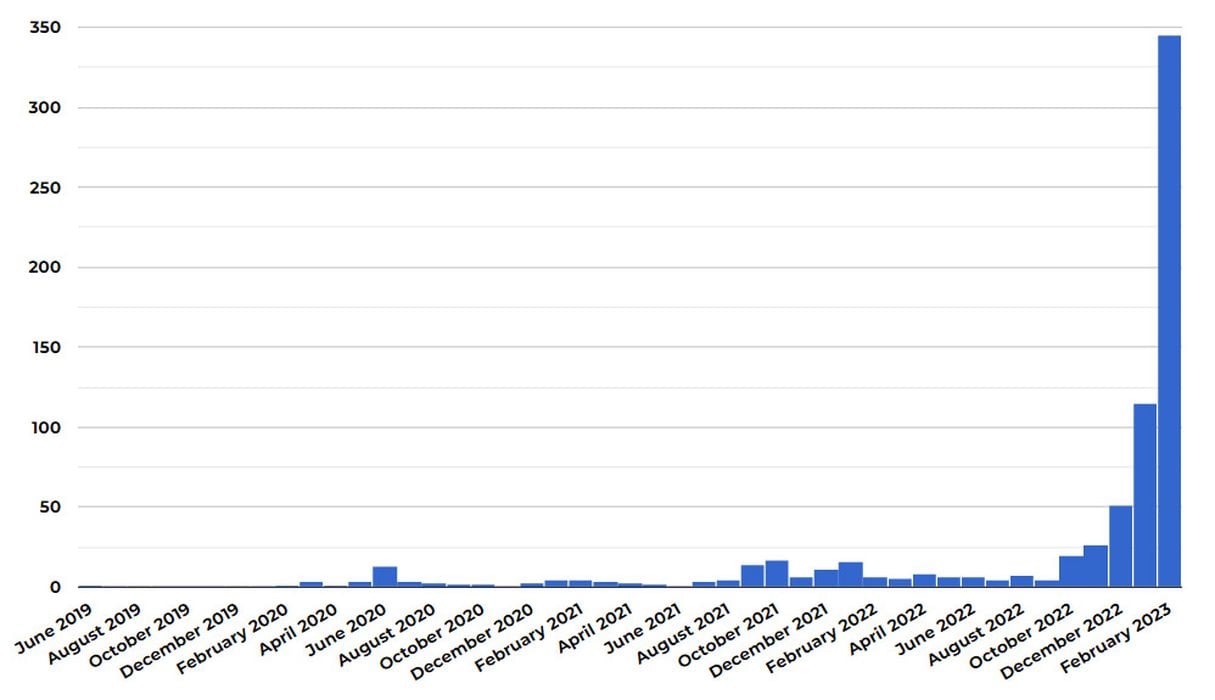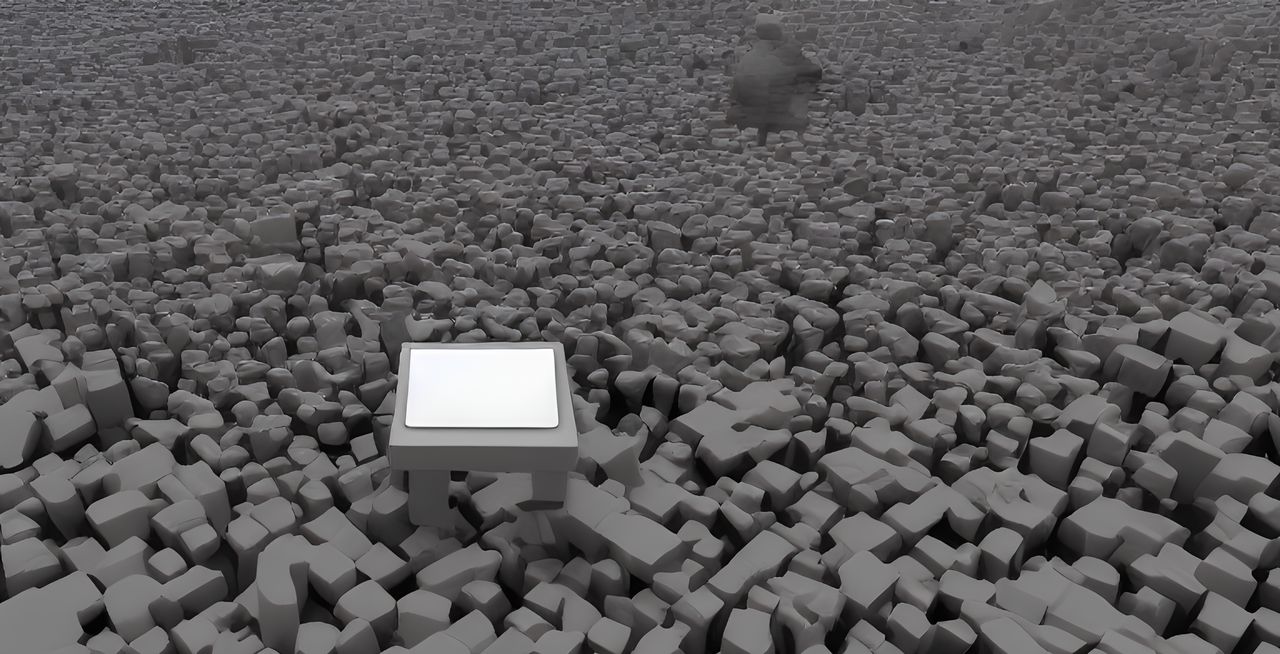
There could be a huge problem for 3D model repositories like Printables, Thingiverse, MyMiniFactory and others in the very near future.
Those repositories are crucial to the future of desktop 3D printing, as they provide a source for 3D models to print for many people who are unable to create their own 3D models. They may not have the necessary training or aptitude, or simply be unable to afford the time and cost to learn and use CAD software.
These repositories also provide a way for designers to show off their wares to the public, and with some platforms, are able to sell those products to the world. In some cases there are designers who now make online design and sales their full time job.
But there could be a problem coming.
I read a post from Clarkesworld founder Neil Clarke. Clarkesworld, a well-known Science Fiction publisher, has had to shut down story submissions.
This publisher, like all publishers, accepts text submissions of new work for consideration in the publication. If accepted, these works appear in upcoming releases, and the authors are paid. Usually the payment is on a per-word basis.
Editors carefully review the submissions to ensure they are appropriate for the publication, and not plagiarized. Neil Clarke, founder of Clarkesworld, said:
“Up until recently, these were almost entirely cases of plagiarism, first by replacing the author’s name and then later by use of programs designed to ‘make it your own.'”
But suddenly that’s changed. Clarke reports that his publication is now awash in a tidal wave of AI-generated text content, and that’s not good. He said at the end of 2022, AI text tools allowed the plagiarizers to produce vast amounts of pseudo-content. Just look at this chart of Clarkesworld submissions:

Clarke normally has up to a dozen or so manuscripts to review each month, but now it’s high 350 and rising. That would require completely processing a manuscript every half hour, all month long.
Clarke wrote that most of these AI-powered submissions can be detected through undisclosed methods, but the noise level is so high that mistakes can be made:
“What I can say is that the number of spam submissions resulting in bans has hit 38% this month. While rejecting and banning these submissions has been simple, it’s growing at a rate that will necessitate changes. To make matters worse, the technology is only going to get better, so detection will become more challenging. (I have no doubt that several rejected stories have already evaded detection or were cases where we simply erred on the side of caution.)”
Evidently most publications are experiencing the same phenomenon, and no one knows what to do about it. For now, Clarkesworld has shut down open submissions, but that can’t last. He wrote:
”If the field can’t find a way to address this situation, things will begin to break. Response times will get worse and I don’t even want to think about what will happen to my colleagues that offer feedback on submissions. No, it’s not the death of short fiction (please just stop that nonsense), but it is going to complicate things.”
Now let’s turn back to 3D printing.

Virtually all of the major repositories of 3D models for 3D printing are “open”, where anyone can make an account and upload content. This has been done to encourage the addition of models, which in turn attracts more buyers of machines to print those models.
This practice has mostly worked for the past decade or so, with the quantity leader being Thingiverse with nearly six million 3D models on the books. Others may not be as big, but some, like Printables, are growing fast.
We also know that there are multiple parties building “text to 3D” solutions that operate more or less in the same way as “text to image” systems. Three parties known to be working on this technology include Luma AI, NVIDIA and OpenAI, makers of ChatGPT.
There are no doubt a slew of others doing the same, only in stealth mode.
At some point soon, maybe even in the next few months, “Text to 3D” technology will be unleashed.
I have a strong suspicion that many individuals will use it to generate dozens, hundreds or even thousands of 3D models and upload them everywhere. Why not? It’s free to upload!
Just like Clarkesworld, we will see a massive spike in model additions to most popular 3D model repositories. Unlike Clarkesworld, most of the 3D model repositories don’t have anyone or anything checking the uploads.
Many of these models will be crap, and of interest to very few, if any users. It’s likely, at least at the beginning, that the models may not even be printable.

This will have a few immediate effects:
- Sites may strain under the increased load of storage and uploads
- Search will become even less usable than it is now
- Rating systems may get skewed
But then there are longer term effects.
We may see these repositories place barriers to keep out the infinite amount of AI-generated crap 3D models. This could be things like quotas, upload fees, point systems, or something even worse.
What could be worse? Consider the case of Neil Clarke. Clarkesworld is his core business, so he HAS TO figure it out. He has no choice. But then consider, say, Thingiverse, which is but a teeny part of the new UltiMaker universe. That universe is dead focused on professional applications, and not the plastic dragon world of Thingiverse. UltiMaker may therefore decide to shut down Thingiverse to avoid added cost and trouble that doesn’t contribute much to their core business.
“Things” could be changing in our near future.
Via Clarkesworld

To some extent, as AI generators become more competent, model repositories will become obsolete anyway. Why bother searching through a repository when you can just generate what you need when you need it.
I am curious how the detection models will work too, because I could see the text to 3D AI tech could be useful to a lot. Use the AI to generate the basic shape you need for a project and then you go in with a CAD software and true up some dimensions, fix some errors, and get something ready to print in half the time it would take to model it from scratch. Also would the detection systems block AI iterative optimized designs? These are questions the repo industry would need to take into question.
Yes I’ve been thinking about these risks as well, there are many who are at risk of a sort of new type of DOS attack, where it’s bogus content being submitted which prevents real content from being acted on. Imagine such an attack on the court system.